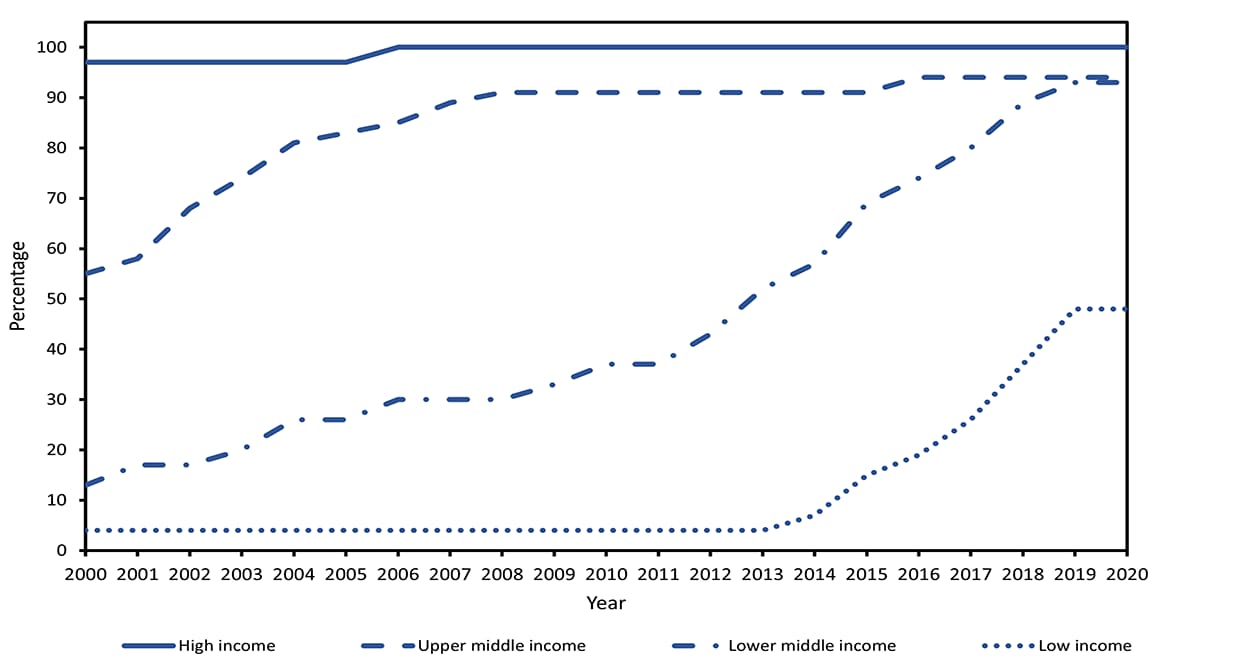What CDC is Doing About Global Measles and Rubella
Updated November 16, 2023
Overall Focus
CDC works with partners worldwide to eliminate measles and rubella, protecting people, especially children, from these deadly and disabling diseases.
Rubella Goals
Eliminate rubella in every region of the world.
CDC works toward elimination goals for rubella established in 5 of the 6 regions of the world.
Rubella infection during pregnancy can lead to serious complications, including miscarriage, stillbirth or lifelong disabilities known as congenital rubella syndrome (CRS). CDC invests in surveillance, early detection, and laboratory confirmation of the circulation of rubella virus. This investment strengthens immunization systems, which include the remaining countries where rubella vaccine has not yet been delivered through national immunization programs. A single dose of rubella vaccine offers protection against the virus for life, helps stop transmission, and saves lives.
Today, rubella vaccine is administered through the national immunization programs in 175 countries. In 2015, the Region of the Americas was declared rubella free, and the remaining five World Health Organization (WHO) regions are making progress toward elimination.
More Babies Protected from Rubella Than Ever Before
Rubella is being eliminated country by country with more babies protected in lower- to middle-income countries than ever before. Because of vaccination activities, 80% of all children worldwide have access to rubella vaccine, and 50% of countries have stopped local rubella transmission.
Measles Goals
Achieve High Vaccination Coverage to Prevent and Stop the Spread; Eliminate Measles in Every Region of the World
CDC is focused on eliminating measles in every region of the world. By improving vaccination coverage worldwide and strengthening national immunization service delivery to reach every child with lifesaving vaccines, a world free from measles deaths and disease is attainable. Today, every region in the world has a measles elimination goal, yet no region has achieved and sustained elimination.
From 2000 to 2022, CDC and partners supported worldwide vaccination efforts against measles that helped save over 57 million lives. Because measles is so contagious and can easily spread to unvaccinated or under-vaccinated populations, CDC works with countries to achieve and maintain a ≥95% coverage rate with two doses of measles vaccine to prevent measles infections and outbreaks.
Vaccinate Every Child on Time to Regain Progress Towards Measles Elimination
In recent years, hard-won progress made towards measles elimination targets have reversed, caused by a failure to vaccinate every child on time. Causes for failure to vaccinate must be addressed and include:
- Ongoing disruptions of vaccination activities during the COVID-19 pandemic.
- Weak and strained health systems leading to many children not receiving immunization services.
- Insufficient focus on reaching all children in every area of the world with vaccines.
- Poor quality data leading to an inability to correctly identify who needs to be vaccinated.
- Lack of investments in measles outbreak response and therefore an inability to quickly and effectively contain outbreaks.
- Ineffective communications strategies to counter the misinformation and disinformation leading people to distrust guidance provided by experts on vaccines.
CDC is a member of the Measles & Rubella Partnership (MR&P), previously known as the Measles & Rubella Initiative, which includes American Red Cross, the Bill & Melinda Gates Foundation, Gavi, the Vaccine Alliance, the United Nations Foundation, UNICEF and WHO. On January 1, 2023, M&RP aligned with Immunization Agenda 2030, with the target of saving 50 million lives through access to essential vaccines by the end of 2023.
All partners adopted the Measles & Rubella Strategic Framework, an ambitious global strategy to maximize the lifesaving impact of measles and rubella vaccines.
Detect, Mitigate and Quickly Respond to Measles Outbreaks to Limit Loss of Life
A worldwide response plan, the Global Strategic Measles Outbreak Response Plan for 2021 – 2023, focuses on strategies and tools needed to detect and respond to measles outbreaks quickly to minimize loss of life quickly and effectively.
Learn more about why CDC is working to eliminate global measles and rubella, and how those efforts save lives and contribute to strengthening U.S. national and global health security.
